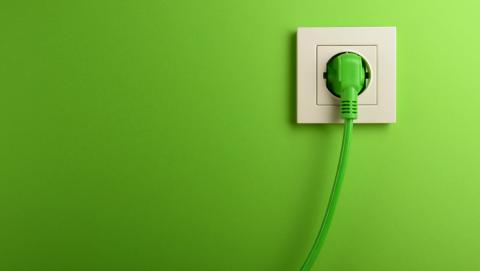
When most people think of electricity, they immediately think of plug loads (devices that plug into an outlet). This is a reasonable jump to make; we all use plug loads every day and they represent a sizable chunk of our energy consumption, accounting for as much as 15% of all residential electricity consumption and 20% of commercial consumption. Unfortunately, because this category encompasses such a wide range of devices—from smartphone chargers to major appliances—it’s often difficult to find robust comprehensive test data on how much power each plug load draws and what its associated energy consumption is.
To help address this information gap, E Source recently compiled hundreds of data points from a wide range of recent research efforts from robust, independent sources into a single spreadsheet designed to facilitate simple, straightforward analysis and comparison of plug load energy use. Available to members of the E Source Technology Assessment Service, this resource summarizes average annual energy consumption, power draw by mode, and average time spent in each mode, for nearly 200 different types of devices.
In compiling this data resource, we found some surprises. For example, it turns out that the single largest plug load in terms of annual energy consumption is actually a medium to large aquarium: A typical 50-gallon aquarium uses around 2,000 kilowatt-hours annually (figure 1). Other top energy users include high-capacity color copiers, two separate types of video game consoles from 2007 (when left on all day; newer models tend to be more efficient), and a room dehumidifier.
Figure 1: Top five largest energy-consuming plug loads
Looking instead at active-mode power draw reveals a different list of leaders (figure 2), many of which can be found in the kitchen. These plug loads draw between 800 and 1,500 watts each, but they all tend to be used infrequently enough that they don’t end up dominating annual energy consumption—essentially the opposite of plug loads like aquariums that have a relatively low power draw and run continuously all year.
Figure 2: Top 10 largest power-drawing plug loads
In addition to power draw and annual electricity consumption of current plug loads, it’s also worth looking at future plug load trends. According to the US Energy Information Administration, the energy consumption of the electric end uses that utilities and efficiency groups have been most focused on to date—including lighting, HVAC, and water heating—are projected to decrease in the future as a result of increasing standards and incentive programs that have historically driven market change (figure 3). In contrast, however, many plug loads are projected to use even more energy than they already do. These trends further highlight the need to start thinking about, and addressing, plug loads in a more meaningful and substantial way going forward.
Figure 3: Trends in end-use energy consumption
These results highlight some of the dilemmas that utilities face when developing programs that address plug load energy use:
- There are hundreds of different types of plug loads on the market, making it difficult to narrow the scope of a program offering.
- Individually, the energy-savings opportunities of any given single plug load tend to be relatively small; only in aggregate do efficiency gains really start to make a difference.
- The largest energy users aren’t always the easiest to build incentives around. For example, plug loads like aquariums don’t always provide obvious strategies for easily increasing efficiency.
Despite these challenges, plug loads are a vital component of customer energy use, and utilities will need to continue to expand their energy-efficiency and demand-response program offerings in this area as more stringent codes make traditional efficiency measures, such as T8 retrofits and compact fluorescent lamp installations, less effective. On the energy-consumption side, the good news is that the US Department of Energy’s ENERGY STAR program and other organizations have established criteria for a wide range of plug loads (including energy-efficient copiers and room air conditioners) and, for products like video game consoles and set-top boxes that have comparatively few major manufacturers, are even currently working directly with manufacturers to encourage increased efficiency.
For utilities that are interested in reducing power draw during demand-response events, plug loads have historically been difficult to control. It’s unlikely that end users will want to stick a large, hardwired switch on their toaster. However, that obstacle may be shrinking with the emergence of new Wi-Fi-enabled smart switches, thermostats, and electronic building energy management systems that could pave the way for utilities to start managing these types of loads while simultaneously building customer engagement. That last part is particularly noteworthy. By encouraging customers to manage electrical end uses like plug loads, utilities may be able to better promote demand-response efforts. Customers know that air conditioners use a lot of energy, but if they know that aquariums are also energy hogs, they will be more likely to turn off or turn down their appliances during peak energy-use hours.
Overall, regardless of whether utilities simply embrace ENERGY STAR–qualified plug load products, start encouraging the use of wireless smart controls for conservation or demand response, or take a more proactive approach involving strategic partnerships with retailers and other relevant parties, plug loads are an important part of consumer energy use that seem destined to become an increasingly large part of utilities’ efficiency portfolios.


